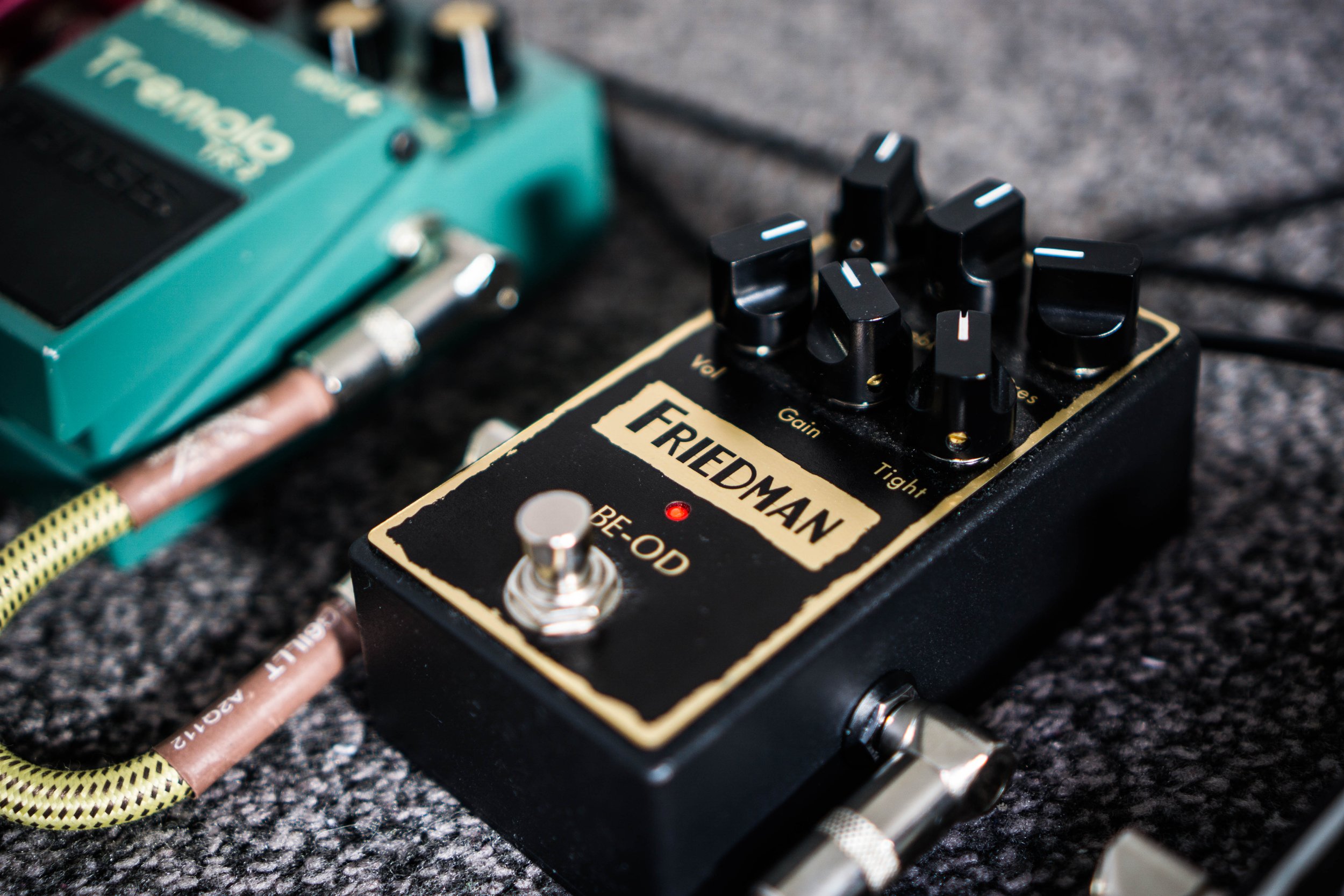Friedman BE-OD
The BE sound in a small package.
£195 at amazon.co.uk | £185 at thomann.de
Friedman’s BE-100 is one of the world's most coveted amplifiers. At 100 watts and 20kg (43lbs), oh and £3000, it is not very practical for most guitarists though. You can get the 50-watt version or even the 20W Pink Taco, but those will still set you back over £1000. Enter the BE-OD.
Yes, it is not quite the same as a 100W tube amplifier and placing it in front of a solid-state or a modeling amplifier can yield mixed results. But place this in front of a Fender Blues Jr or a Revv D20, and you will get very close to that Brown-Eye sound. I would dare say that for most people, it would be the more practical approach anyway because you will get that signature tone at a lower volume without having to lug a 20kg amplifier around.
The controls look a bit convoluted at first, but they are very useful in practice. Bass and treble give you a little bit extra eq ability than a single tone pot would. The presence knob is very similar to the one found on the actual BE amplifier. It will add higher frequencies to your sound (along with an increasing amount of hiss unfortunately). “Volume” is self-explanatory.
The gain knob doesn’t offer a very wide range. Even at 0, it will yield some heavy distortion. As you increase the gain, you will get a very saturated Marshall Plexi sound. Roll off the guitar volume a bit and you will be in AC/DC territory.
The ‘tight’ knob is my favourite feature! As you turn it clockwise, you get an increasingly modern, compressed (tight) sound. Think Slipknot and Slayer. As you roll it back, the sound is less controlled, less compressed. Very nice for heavy metal. The ‘tight’ knob can completely change the feel of the BE-OD and also offers you everything in-between.
Additionally, there is an internal gain pot that lets you set the maximum gain available in the pedal. I would recommend keeping it where it is, unless you really need more gain or a lower gain floor. In my experience, it doesn’t sound as articulated when you deviate too far from the default setting.
It is also worth noting that the BE-OD can be used as a preamp pedal. Plug it in to the FX loop return on the back of your amplifier and bypass the tonal character if your amp. It doesn’t necessarily sound better in every circumstance, but bypassing the preamp on my Revv D20 did make the distortion sound much more amp like - more ‘squishy’.
The BE-OD is not a very flexible pedal. It’s designed to have all the controls you need to make your amp sound very close to a Friedman BE-100, and it accomplishes that. Keeping this in mind, the pedal is priced very well.
I do feel that the build quality is not on par with the premium sound. The enclosure is suspiciously light. That is not necessarily a bad thing, particularly if you are adding it to an already bulky board. That said, it made the pedal feel cheap.
Bottom Line
The BE-OD is an amazing pedal and will make almost any setup sound like a hot-rodded Marshall Plexi. It is expensive, but the cost is justified, considering you are getting pretty close to the signature BE sound with a lot less hassle. Just like a Boss Metal Zone - the BE-OD is not for everyone. Keep in mind that, unless you exclusively play rock and heavy metal, you will want an additional medium-gain overdrive in your arsenal. If you want something more flexible, consider the Friedman Dirty Shirley or the Fulltone OCD.



